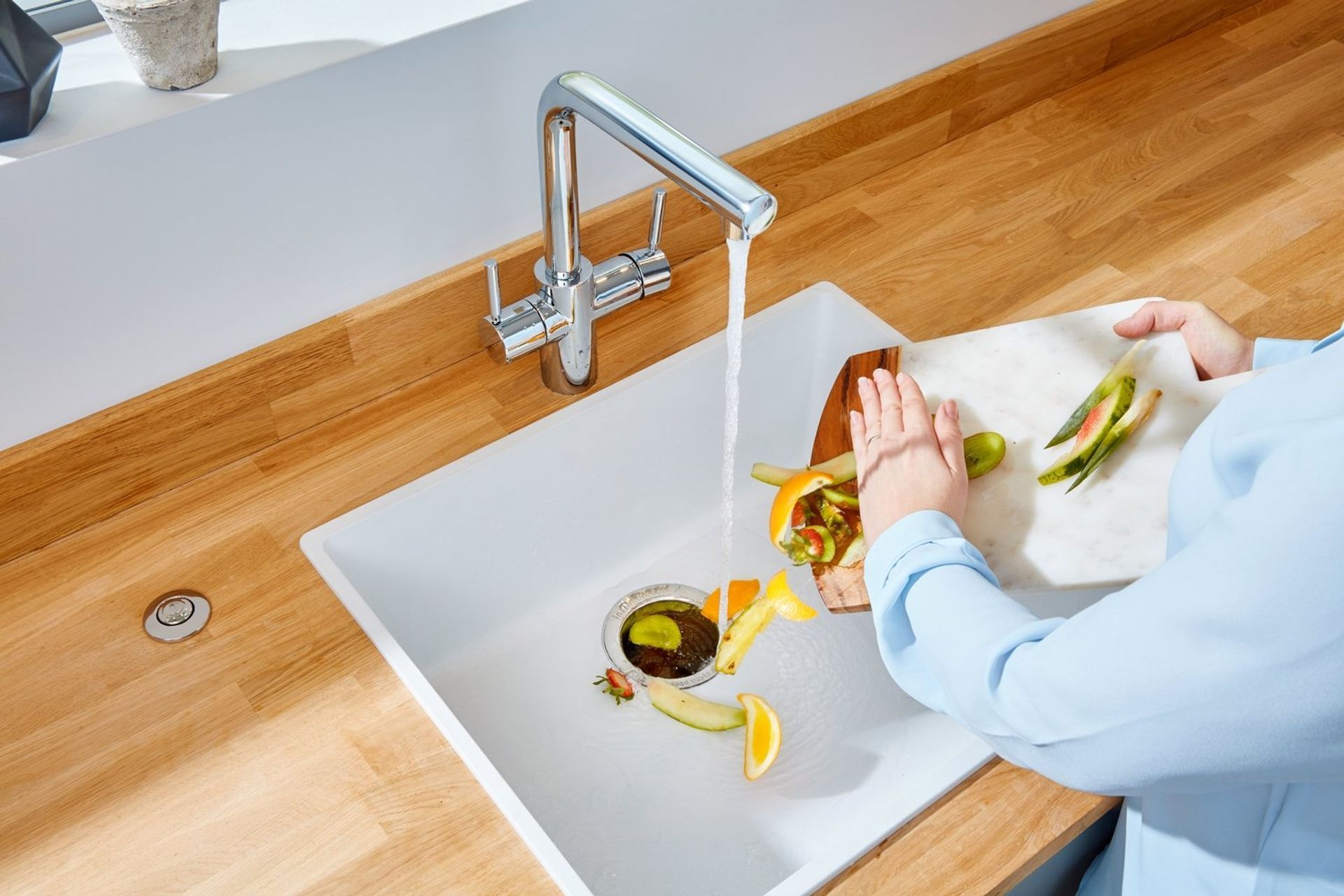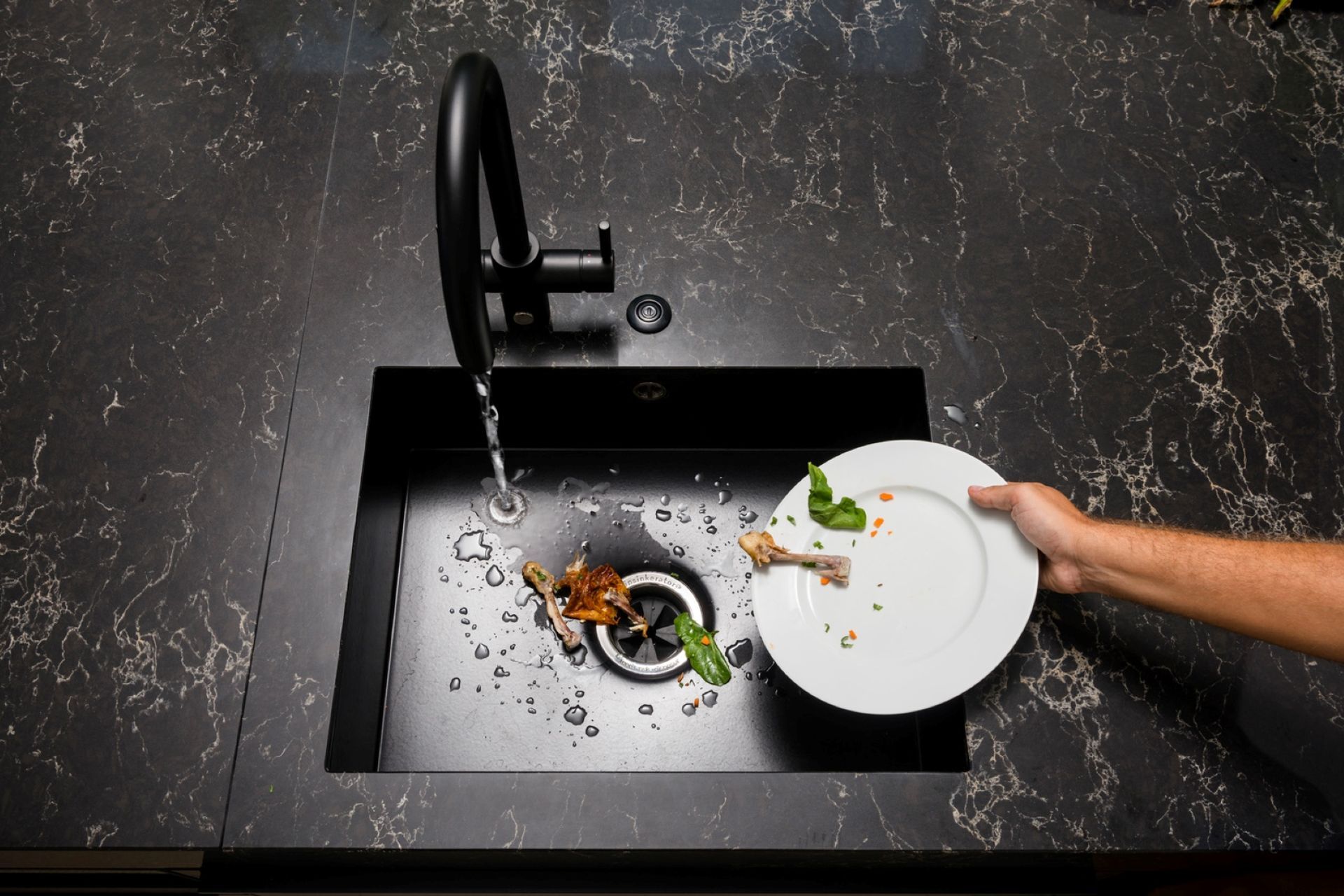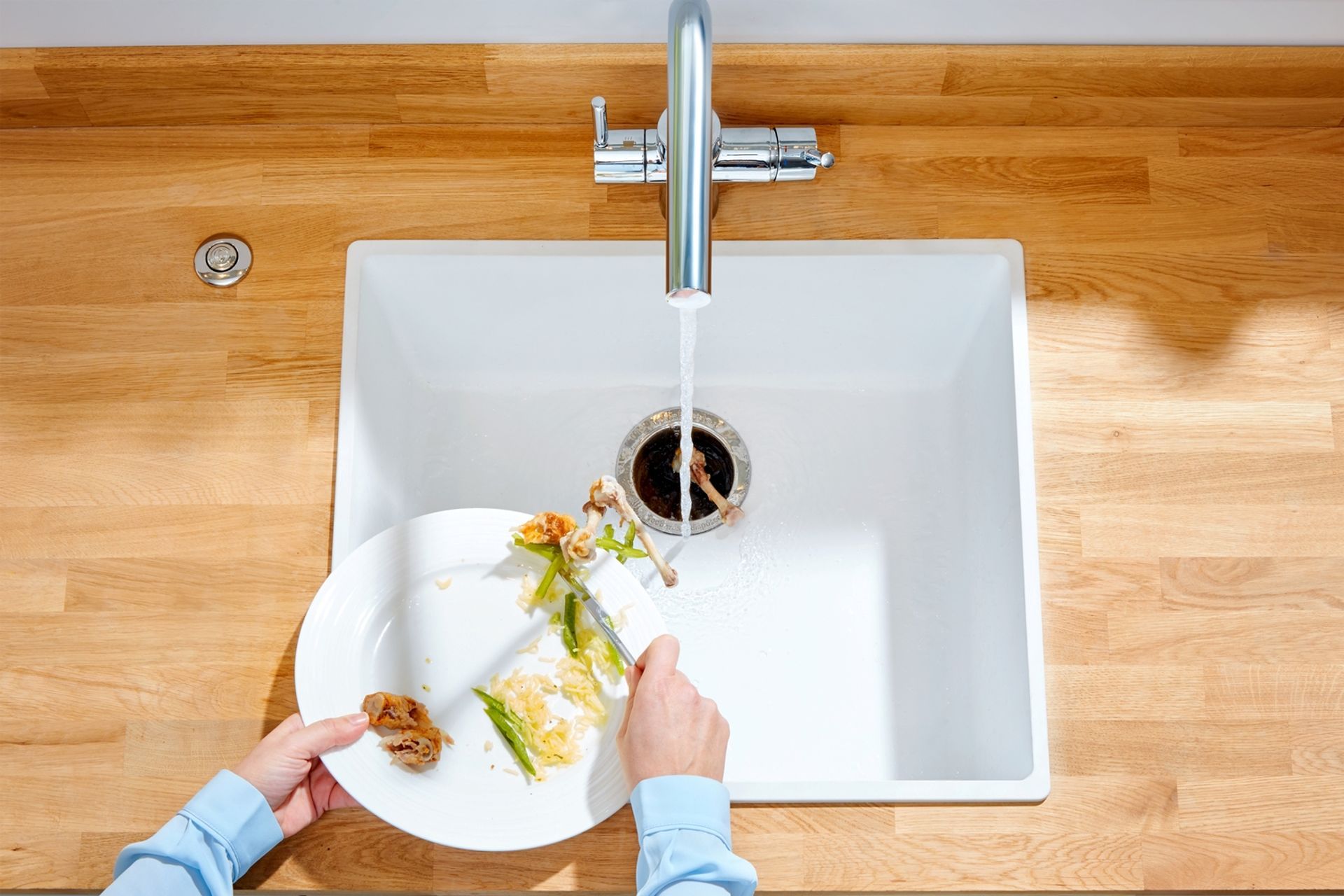The future of waste management: innovations in food waste disposers
Written by
08 September 2024
•
5 min read


Modern food waste disposers have seen significant advancements in recent years, offering improved efficiency, noise reduction, and sustainability. Upgrades in grinding systems, and reductions in water usage have been developed alongside smart features, such as automatic jam clearing and integration with home automation systems, making maintenance easier and more efficient.
“Overall, modern disposers are more efficient, quieter, and environmentally friendly compared to their traditional counterparts,” shares InSinkErator’s Tim Meyer. Here, he shares the new technology that’s revolutionising the way we manage food waste.
Efficiency & environmental impact
Modern food waste disposers are more efficient and environmentally friendly than traditional models in several ways; with optimised grinding mechanisms and sensors, modern units use less water and energy, lowering their overall consumption.
They can also contribute to reducing the overall amount of waste sent to landfills, through breaking down food scraps (sending them through wastewater systems instead of to landfills) which decreases methane production.
“Modern disposers often integrate with waste-to-energy systems, reducing landfill waste and methane emissions and making them more sustainable,” shares Tim. “Processed waste can be converted into biogas or fertiliser, reducing landfill dependency.”

The latest in smart technology for food waste
Smart connectivity now allows for remote monitoring and maintenance, ensuring long-term efficiency of disposers.
“The key benefits of integrating smart technology into food waste disposers is efficiency - the automatic load adjustment optimises energy and water use, reducing waste; and cost savings: smart diagnostics and preventive maintenance lower repair costs and extend the unit's lifespan.”
Remote monitoring and customisable settings and data insights enhance user control, making modern disposers more convenient and sustainable, while the safety aspect of automatic shutoff prevents accidents and malfunctions.
Aside from smart technology, the most recent improvements in disposers also enhance their functionality.
“InSinkErator now offers advanced grinding, which means multi-stage systems break down food waste more effectively, preventing clogs and improving waste processing,” says Meyer.
“The latest sound insulation and anti-vibration technology make disposers quieter, and modern modern disposers are compatible with systems that convert waste into biogas or compost, reducing landfill impact.”

How to choose a food waste disposer
There are many aspects to consider when choosing a food waste disposer and Meyer shares the following checklist to ensure the disposer meets your needs and sustainability goals:
- Grinding efficiency: Look for models with advanced grinding systems that can handle a variety of food waste, including tougher items, to minimise clogs and improve performance.
- Energy and water usage: Opt for energy-efficient models that use less power and water, contributing to lower utility bills and a reduced environmental footprint.
- Noise levels: Choose disposers with sound insulation or anti-vibration features if noise is a concern, especially in residential settings.
- Size and capacity: Ensure the disposer’s capacity matches your household or commercial needs. Larger units may be necessary for high-volume waste in commercial kitchens.
- Environmental impact: Consider models that are compatible with waste-to-energy systems or that help divert food waste from landfills. Look for products made from recyclable materials and those designed for longevity.
- Smart features: Evaluate whether smart technology, such as remote monitoring, load sensors, and maintenance alerts, could enhance convenience and efficiency.
- Installation requirements: Check the installation requirements and compatibility with your existing plumbing. Some models may require professional installation.
- Maintenance and durability: Look for disposers that are easy to clean and maintain, and check for warranties to ensure long-term reliability.
By considering these factors, consumers can select a food waste disposer that aligns with their operational needs and sustainability goals.

Are modern food waste disposers designed to handle a wider variety of food waste types, including tougher or fibrous materials?
In the past, food waste disposers were known to struggle with some fibrous food, meaning more attention was required from the owner, particularly if there were children in the house who needed supervising when using the disposer. These days InSinkErator’s disposers are designed to handle a wider variety of food waste types, including tougher or fibrous materials, through several key innovations, including:
Enhanced grinding: Modern disposers use multi-stage grinding systems that break down food waste into finer particles. “This allows them to handle tougher materials like bones and fibrous vegetables more effectively.”
Advanced grinding components have also changed the game, shares Meyer. “Enhanced materials and designs, such as stainless-steel grinding components and specialised blades, improve durability and performance for handling hard and fibrous waste.”
The latest disposers also feature redesigned grinding chambers that facilitate better food waste movement and processing, making it easier to handle a variety of waste types. Some models even offer adjustable grinding settings or modes that can be customised to handle different types of food waste more effectively.
Heavy-duty motors: Increased motor power and torque in newer models improve the ability to grind tougher and more fibrous foods, reducing the risk of jams and clogs.
“Incorporating features like automatic jam-clearing mechanisms or manual reset options helps manage and prevent blockages caused by tough materials.”
These advancements help modern disposers manage a wider range of food waste types, ensuring efficient operation and reducing maintenance issues.
Explore the latest food waste disposers from InSinkErator